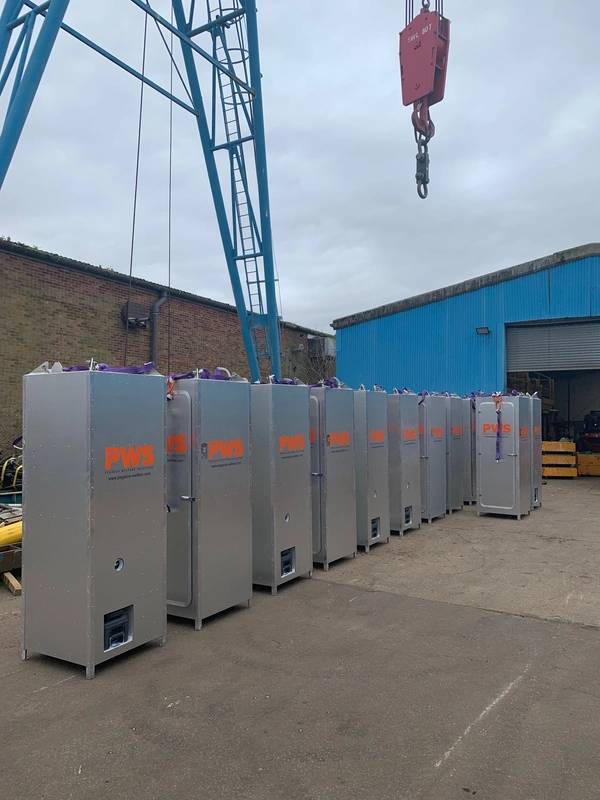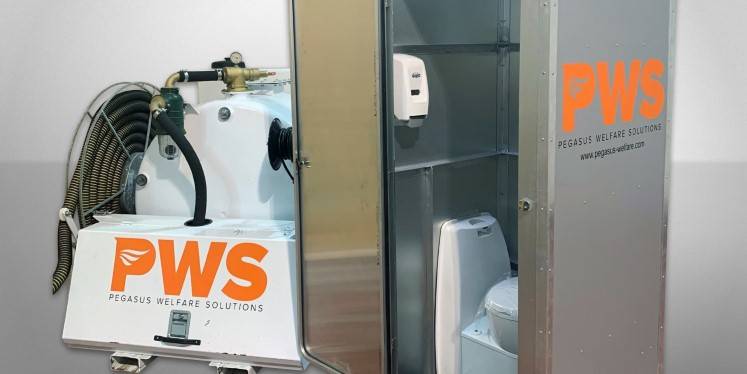
Offshore equipment company OEG Offshore (OEG) has this week acquired Norfolk‐based Pegasus Welfare Solutions (PWS), a company that developed the world's first offshore wind turbine toilet, for an undisclosed sum.
Aberdeen‐based OEG, which provides the offshore market with DNV certified containers, baskets, skips, workshops, and offshore tanks, said the acquisition strengthened its offering for the renewables sector with PWS’ range of offshore workforce welfare solutions. As part of the deal, PWS founder Dan Greeves has joined OEG as Head of Renewables.
"Engineer Greeves’ invention of the world’s first offshore wind turbine in‐tower toilet was hailed as an industry gamechanger when it was released last year, winning a first order by Swedish energy group Vattenfall for a unit for every turbine on its Aberdeen Offshore Wind Farm, renowned for its ‘firsts’ and industry innovation," OEG said.
Vattenfall in January said that every turbine on Aberdeen Offshore Wind Farm will be installed with a loo, saying that this was more than a convenience – as turbine toilets deliver better safety for technicians by cutting ladder climbs to vessels and vastly increases productivity.
"Greeves, former Head of International Development for James Fisher Marine Services, will now drive PWS’ patented product portfolio across OEG worldwide and further develop OEG’s products into the offshore wind sector, while seeking out new renewables opportunities and acquisitions in the UK and internationally," OEG said.
Elephant in the (very narrow) room
OEG Chief Executive Officer John Heiton said Norfolk‐based PWS was a perfect fit as OEG reshaped its portfolio in line with the energy transition and expanded its global footprint.
“Dan has developed patented products that have addressed the ‘elephant in the room’ in offshore wind and deliver real results for developers by improving safety and productivity, as well as addressing the important diversity issue in the sector," Heiton said.
“Its stable of patented products have massive worldwide potential. We intend to develop this business across Europe and into Asia and the Americas as offshore wind continues to develop as a sector," he said.
“PWS multi‐unit rental systems are used in offshore wind construction but also have huge scope in offshore oil and gas decommissioning projects and other sectors, such as humanitarian crises and military uses,” Heiton said. Credit: Vattenfall
Credit: Vattenfall
Webinar: Where it all started
Back when announcing the deal to deploy PWS toilets on all of its Aberdeen Offshore Wind Farm turbines, Vattenfall shared a story on how Greeves came up with the in-turbine loo solution, after an offshore health and safety professional questioned the lack of offshore loos at an industry webinar.
"Dan said he took a webinar question: “Why has no one tackled this before?” asked by Jack Kiely, HSE specialist offshore for Vattenfall, as a challenge," the wind farm developer shared.
“Currently, no offshore turbine has toilet facilities. Within 119 days of Jack’s comment, I had secured the worldwide patent for the world’s first retro-fit in-tower toilet that not only delivering workforce welfare, but offers clients other major benefits," Greeves said, according to Vattenfall.
“An in-tower toilet dramatically improves safety by eliminating the number of 11-16metre ladder climbs to use the toilet on a vessel, it improves productivity by saving technicians an average of 1.4 hours a day on vessel loo visits.
“The number one cause of incidents and accidents in the G+ report this year is the transfer of people between a vessel and the asset," he said.
The in-tower unit is a permanent offshore version of patented multi-unit toilets used in the construction stages of offshore wind also created and manufactured by PWS.
How does it work?
According to information on PWS' website, each in-turbine toilet unit comes with its own rigging and certification. The cubicle can be carried and installed by two technicians within an hour, according to Vattenfall.
In-Tower units can be mobilized offshore by crew transfer vessels or an SOV. They are designed to be lifted by a turbine or vessel crane.
Once installed, the In-Tower unit operates using a cassette system. The technician takes a cassette to site, installs it into the unit, and retracts it at the end of the day to take back to base for cleaning.
"This sealed cassette system ensures technicians have no risk of contact with waste and no waste is stored on the asset," PWS says on its website. Furthermore, PWS offers a service contract to empty and recharge the cassette units at the base facility. Schedules are created based on use.
The wind farm
As previously said, the first PWS loos will be installed at Aberdeen Offshore Wind Farm - also known as the European Offshore Wind Deployment Centre, located off the coast of Aberdeen in Scotland.
According to Vattenfall, innovative next generation technology has been deployed at the wind farm, installing 11 x 8.8MW turbines, paired with suction bucket jacket foundations, an industry first. First power was generated in July 2018 and the operations and maintenance (O&M) team is based at Aberdeen Harbour in Scotland.
The EOWDC has been awarded up to €40million of funding from the European Union and is supported by Aberdeen Renewable Energy Group (AREG).



